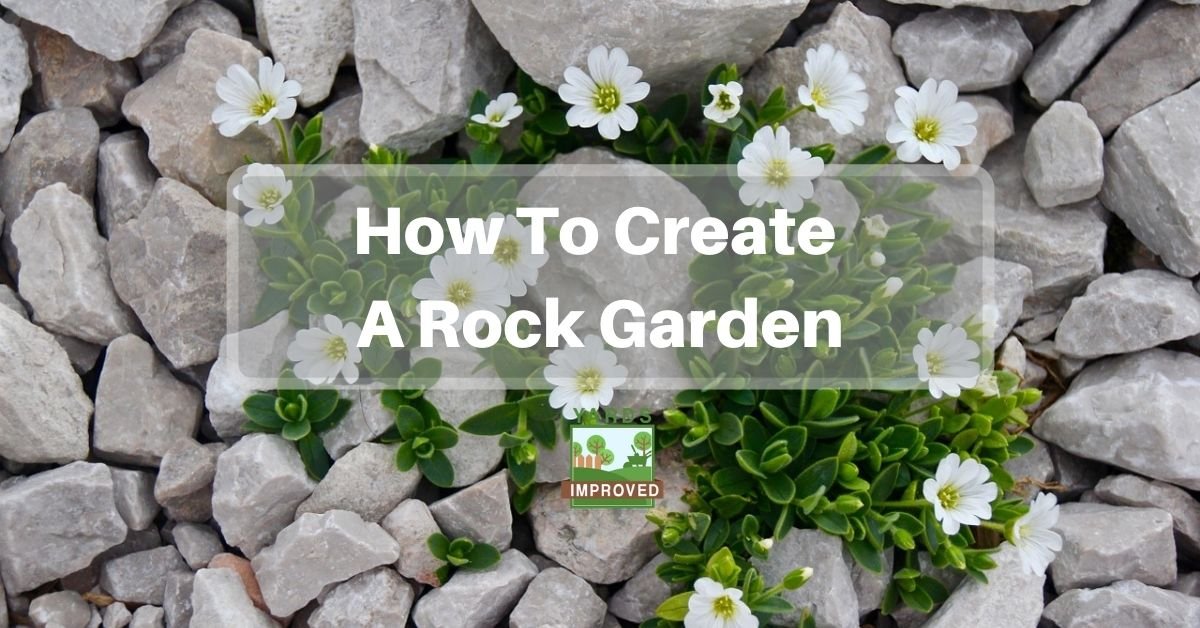Looking for a new and original idea for your yard? Want a garden but feel limited because of the terrain? Have a steep slope where you’d like to grow “something” but don’t know exactly what would work there? You might want to consider a rock garden.
A rock garden can work well in almost any space, no matter the size, the shade, or the levelness of the ground. It’s great for all those unique spots where nothing else seems to work. It can also be fantastic for showcasing plants that are a bit out of the norm.
Choosing a Spot for Your Rock Garden
When you decide on a rock garden, you first have to pick out where to locate it. In many cases, though, it might be the other way around: it’s the land itself that tells you that a rock garden is going to work better than other alternatives.
One consideration that you should take into account, though, is making sure the space for the garden has good drainage. Since most plants in a rock garden are ones that are accustomed to drier soil, you want the soil to be able to dry out quickly. In some places, you might have to add drainage. But you might also simply be able to add a few inches of soil on top of what’s naturally there.
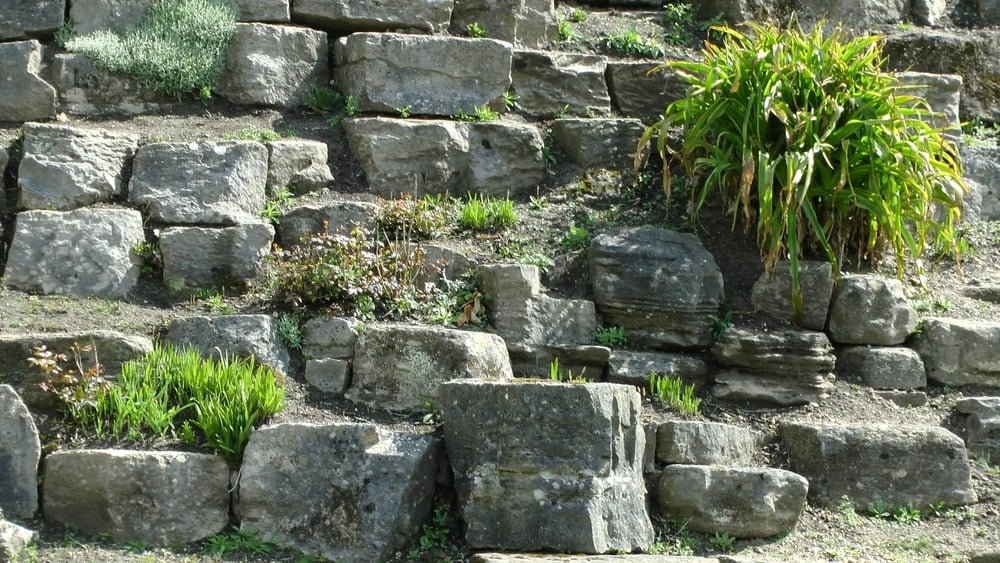
Sun and shade will dictate what plants will work well, but you can have a rock garden and make those choices later.
Even a small space works great for a rock garden. Of course, the size of your space will affect the rocks you choose. However, you could choose anything from pebbles to boulders to create a marvelous space.
One precaution you do want to take is to be sure that your rock garden isn’t above any buried utility lines or other spots they may need to be dug up. That’s especially important if you’re using heavier rocks! While it’s a sad loss to have to dig through a regular garden or a well-manicured lawn, it’s a much bigger hassle when you have to remove the rocks you so carefully placed.
The Tools You’ll Need
Most of what you’ll need to work in a rock garden is the same as in any garden. But there’s an important difference: you’ve got rocks to move!
The bigger the rocks you want, the more difficult it’s going to be to move them. With a small garden and smaller rocks, a wheelbarrow may suffice. However, if you’re going for a bigger statement, you may need a pickup to haul the rock as close as possible to where you want it. For big projects featuring boulders, you’re probably going to have to rent the services of a crane.
Some of the other tools you’ll need include:
- Shovel
- Garden rake
- Hose
- Weed-resistant fabric (optional, but useful!)
- Heavy-duty gloves
- Work boots
You’ll also need rocks and soil. Choose rocks that will work well in your space and work well together. Try to imagine how their shapes will play out together. It also helps to choose rocks that already look aged so that your garden will appear more natural.
Steps to Creating Your Rock Garden
It’s important to carefully plan out your rock garden since it’s tough to have to move rocks repeatedly. Taking the time to think it through will save a lot of backache later.
Once you have the area chosen, start by clearing it of weeds or any other elements that will not be part of your garden.
If necessary, you may have to dig and lay drainage pipe below the soil. However, it may not be necessary if there’s enough natural drainage.
To create the most natural look, you’re probably going to want your rocks to be partially buried. So before added soil, you may want to place the larger rocks, even digging them into the existing soil.
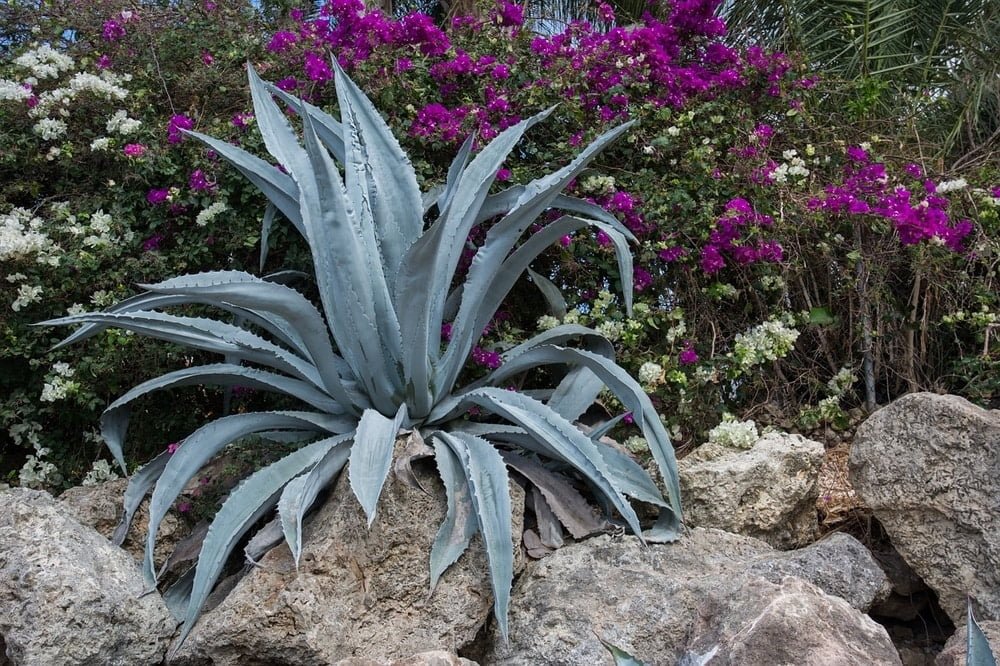
A weed-resistant fabric will help keep weeds under control. If you choose to use one, do it now, cutting it to fit around the rocks you’ve already placed. This will save tons of time on maintenance later on.
Typically, the plants that are grown in a rock garden thrive in sandy soil. You may find a good mix at your local garden shop. If you have soil with a higher clay concentration, you’ll want to create a mix that uses sand and gravel along with it. The proportions should be about ⅔ sand and gravel to ⅓ native soil. Use enough to create a layer 2 or 3 inches thick.
Once the soil is set, it’s time to set your stones. In most cases, the idea is to make the arrangement look as natural as possible. That can be really tough to achieve! But have some patience and don’t be afraid to make adjustments. That might be hard to do with the bigger pieces, but use smaller ones to balance the look.
Once all the rocks are in place, you’re almost there! To help everything settle into place and to clean up any soil on the rock, gentle hose down the whole area. From there, you’ll just be left with planting!
When you do get to planting, the same principles apply as in most gardens. You’ll want to try to arrange the plants according to their needs, but also to provide the most visibility. That means taller plants toward the back, of course.
Rock gardens are recognized for their sparseness, so you don’t have to worry about filling every available space. Also, most of your plants will grow bigger over time, so you need to allow room for that, as well.
Choosing Plants
Speaking of plants, which ones should you choose? What kind of plants will thrive in this environment?
There are a lot of choices and yours should depend on your climate as well as how well-lit the area is. There are a huge variety of succulents and many great flowering plants that can beautify your space, though. It’s always good to consultant with the experts at your local garden center to get tips on what works best in your area.
Some great choices for sunny rock gardens include:
- Snowcap rockcress
- Mountain alyssum
- Carpet Bugle
- Sea pink
- Hens and chicks (Sempervivum)
- Snow-in-summer
- Dwarf coreopsis
- Zinnia grandiflora
- Ice plant (Delosperma)
- Basket-of-gold
- Hybrids of iris reticulata
- Serbian bellflower
- Bluebell
- Arenaria
- Cottage pink dianthus
- Cranesbill
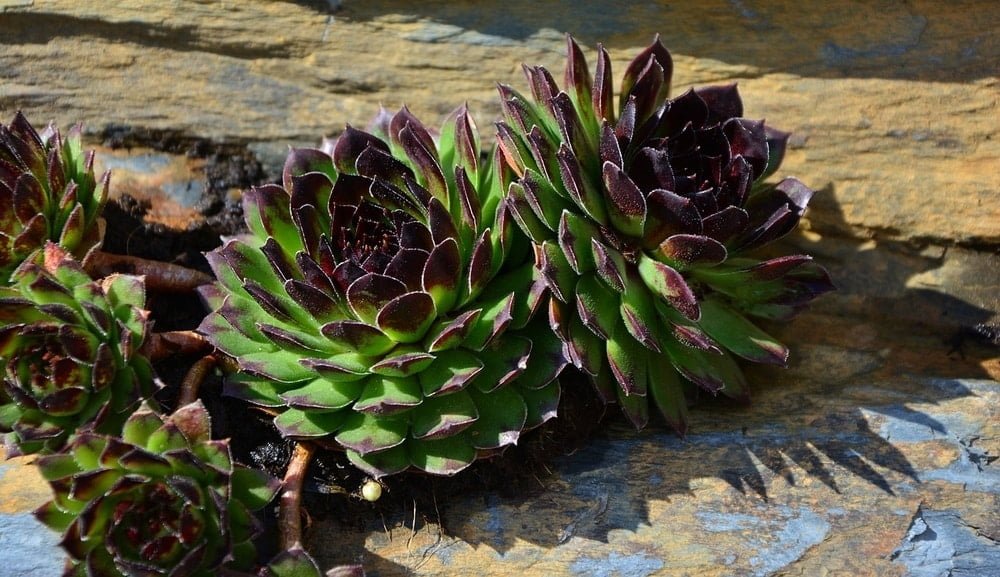
If your garden is situated in the shade, there are other fantastic options, such as:
- Ivy leaf cyclamen
- Saxifrages
- Alpine Columbine
- Ramonda – these are related to African violets
- Miniature hostas
And your surprise of the day: HERBS! Many herbs will thrive in rock gardens – even better than in a traditional garden or window box. You can dedicate a small rock garden just do herbs, or mix them among other plants to make your garden functional and beautiful!
Maintaining Your Rock Garden
Rock garden maintenance is rather simple.
In the early weeks, while your plants are still getting established, you’ll want to water somewhat regularly. Remember that these plants don’t need tons of water, but with the shock of transplanting and the needs of a new garden bed, they can use an extra drink.
Once they’re established, you’ll be able to cut back on the water. You’ll see normal signs that the plants need water.
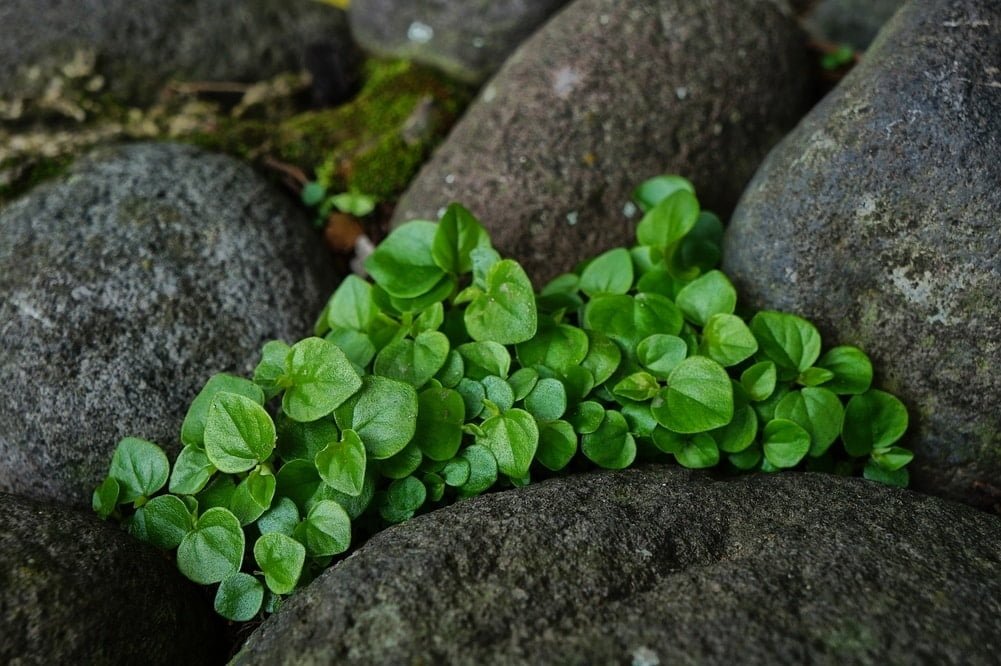
If you’ve added the mesh under your soil, you should have a minimum of weeding to do.
Other than that, there’s not much to it! The plants that do well in a rock garden generally don’t need much as far as fertilization. They’ve evolved to get by with little water and are able to live with the nutrients they draw from the soil.
Conclusion
Sometimes your conditions mandate a rock garden. Other times it’s a matter of taste. Whether you have a choice or not, the sparse, natural, simple feature can be a beautiful feature of your property. With the right rocks and plants, you can create a unique and beautiful masterpiece. No matter where you live, a rock garden is a beautiful addition!

